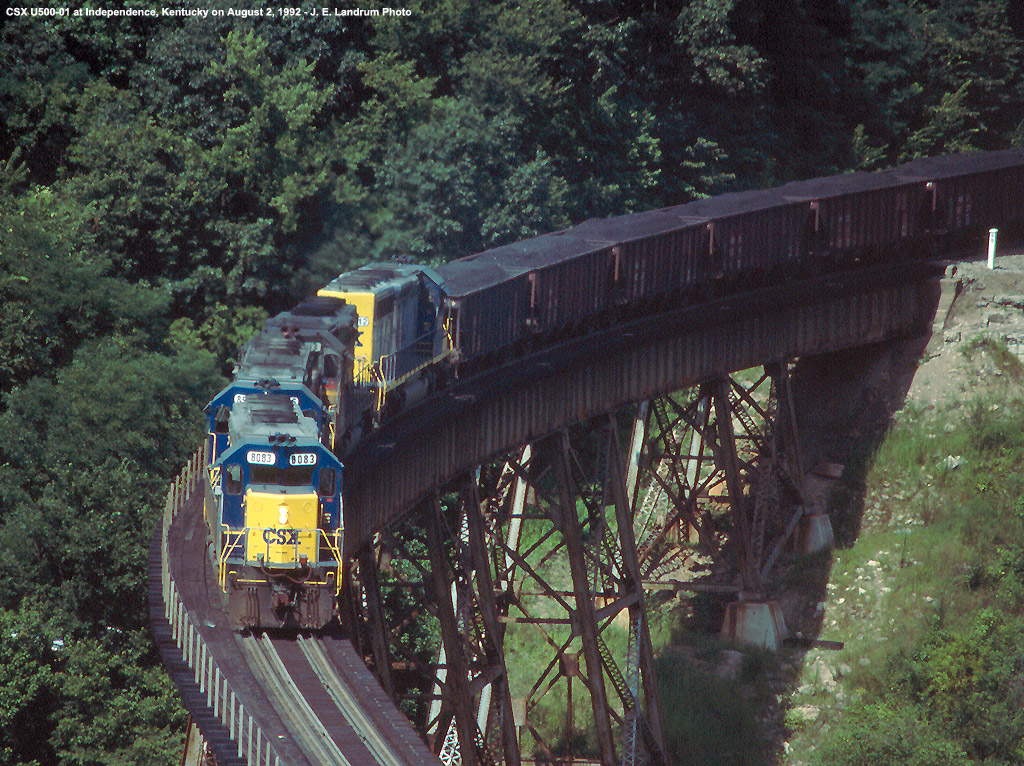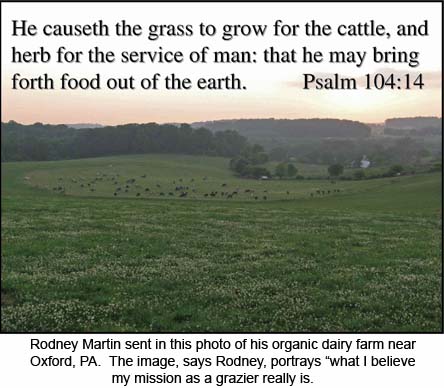EVERYTHING RISES AND FALLS ON STEWARDSHIP
Servant-Leadership and Land Management in Sustainable FarmingThe quest for the perfect farm begins after a great hiatus in Canada awaiting my husband's immigration to the United States. Sitting here, I must admit that we are blessed despite the long wait. We have had the pleasure of being on honeymoon almost two years. Life on the prairies of Canada is rather peaceful except during seeding, haymaking, and harvest time.
Even those weeks of hustle and bustle are tame compared to the city life to which I am accustomed. We have been afforded the rare opportunity of uninterrupted time together. Rising each morning, breakfasting together, and planning our day accordingly without the slightest threat of intrusion.
Life before marriage had a strict schedule. While all farmers maintain a schedule, there is no brutish foreman tapping his fingers on the time clock waiting for you to arrive. You are your own boss. The weather dictates when you rise or lie down. When the snow plow rolls out or the hay rake gets attached to the tractor. During Summer, the rooster wakes us to the smoky blue and vivid pink hues of mixing air and rising sun that make Manitoba such a special place.
Occasionally, the Lord will brighten your day with a double rainbow before the fiery orange disk settles in the distance. Low hanging clouds mimic the mountain ranges so common in the southern States. Alas, it is but an illusion. The clouds must laugh at all the newcomers here. The TV hums softly after supper and the coffee is always fresh. Daylight when it is warm lingers until almost ten o'clock each evening before the moon decides to grace us with her presence.
Yet, when the snow comes the world becomes a blank page should a white-out occur. In the evening, the moon is your only light as the wind cuts through the prairies depositing and drifting snow without care while we remain inside and warm. The morning after a good snow, the prairie's pristine countenance is displayed so pure and true that one might think the vestige of God lies before him. Yes, we have been blessed.
These past months were filled with Internet queries, perusing real estate listings, researching sustainable and organic farm practices, learning more about food safety and agricultural legislation in the United States. Each state in the Union has the right to make their own food safety laws in addition to the rulings of the Food & Drug Administration (FDA) and the U.S. Department of Agriculture (USDA).
For instance, one state may allow the sale of raw milk direct to the consumer while another state strictly prohibits such transactions between the farmer and end user. Learning the rules and regulations for the state in which you plan to operate is crucial.
The question arose whether we wanted to be just a sustainable farm or certified organic? If possible, we would love to be a certified organic farm but that poses some difficulty. Unless you purchase a farm that is already certified organic, the waiting period is three years due to contamination in the soil. When regular crops have been planted in the soil, chemically fertilized, and sprayed with different cocktails of weed killing solution the ground is contaminated by default. Whatever it renders in the next few years will contain a measure of chemical. This is why ground must be worked without chemical fertilizers, weed killers, or pesticides for three years. The land must have time to recuperate and return to its original state before one can apply to receive certified organic status for their farm.
There are organic farms for sale. The ones that we located were either too far from where we wish to be or lacked enough acreage for our business model. Most sustainable farms are grassland based, which seemed easy enough to locate. At least, I thought it was easy! The challenge is finding the proper acreage to fit your model. And...it must lay right. If you are interested in sustainable farming, please go to www.feedtheworld.org for information on how sustainable farming can end world hunger.
For example, a hill farm may offer spectacular views but unless you keep sheep and goats exclusively, you will run into grazing issues with other livestock. If land is inaccessible to an animal, it will not be grazed. Then, it must be cut for hay or tilled into cropland to remain useful. If the hills are too steep to operate a tractor safely, the farmer's only recourse is to let the sheep graze it down.
Being raised in hill country but never farming, I could not comprehend the importance of this in the beginning. After much tutoring from my dear husband, I have come to understand why the lay of the land is so important to a farmer. My initial response was, "Oh, then we should just buy flat cropland." Again, I had the wrong answer. This city girl was so confused. The cropland is plowed up; grass would have to be sown. The L&N rail line below crosses the Banklick Creek near my former home. The hills of my home were too steep for our farming model. We learned quickly that a move further south into the state would be necessary to meet our objectives.
Trees provide shade for livestock during the warmer months. On cropland, they are few. So, cropland was not the answer despite its flatness because it lacked enough wooded area for the pigs, temporary shade for the cattle, the chemicals in the soil went against our principles, and turning it back into grassland was cost prohibitive. The mix of cleared and wooded areas as seen in the small farm located in Independence, Kentucky depicts an ideal sustainable setting below.
To the commercial farmer those chemically treated crop acres are worth a fortune evidenced by the price tags on most for sale. This baffled me as my inner accountant tallied up the cost of commercial/conventional farming exclusive of the damage it does to our landscape and the environment. The conventional farmer spends his life paying off his mortgage, financing equipment purchases to work the land, buying seed to plant in the land, repairing machinery as it fails, and paying seasonal workers to harvest the crop. He spends his nights worrying about the weather and his yield. He spends the morning surveying and hoping for rain or sunshine, whichever he needs that day. He has a mortgage that will either be the ruin of him or the haunting of him until he retires. Only in retirement does the commercial farmer really get paid for his life's work. How sad to toil all those years and have to relinquish it to make it really pay. This should not be! When sustainable farming methods are used, the farmer is not only more productive. The sustainable model ensures record revenues per acre while keeping operating costs low. In many instances, the sustainable farmer is making more annually on fewer acres than the commercial farmer is making with thousands of acres after expenses.
Progress and ingenuity birthed the tractor. The large Shire horses were unhooked from the plows and horse power became an engine specification. Even organic farmers employ machinery unless they prefer the more Victorian farming methods, which are being practiced on a few farms right now. Machination preceded the feed lot system, however, which was the greatest disservice ever fostered against man and beast. The sustainable farm can be effectively run with slightly more manual labor but greatly reduced machine time and fuel expenditure while it replenishes the land and adds inches of precious top soil over time.
An in-depth series on the Dust Bowl aired in 2012 that opened my eyes to the true horror of this 1930s agricultural disaster. Now, the irrigation methods used to keep that soil yielding have greatly depleted the water table in the West. The Colorado River Basin is at risk. How much longer can this type of farming in the prairies be sustained? When the prairies become a desert, the Earth will render its verdict. We will have no hope of appeal with Mother Nature. A report dated December 12, 2012 from the U.S. Department of the Interior bears the grim news of projected water imbalances between supply and demand. Once it is gone, we have no more.
You can read it here: Salazar Press Release
Instead of giving back to the soil and enriching it, the plows came through and raped the land. Never more would bison and cattle pass through to graze and fertilize most of those pastures. Some have been put back into grassland but the majority of this land remains in crop. Land that should have never been plowed from the beginning. Chemical fertilizers were born to replace the manure, which gave back to the Earth and kept it fertile. Species no longer lived in harmony in the farm yard. Operations focused on single species production and placed them in large and poorly ventilated structures with inadequate waste systems. Dead walks came into being as daily inspections for deceased animals were necessary given the cramped living quarters that resulted in higher livestock fatality rates. One look at the suffering and diseased chickens inside this factory chicken farm operation tells us all that we need to know as Americans, consumers, and most of all: human beings.
Diseases became more prevalent. Antibiotics swept onto the scene. Living conditions continued to decline until someone decided to take a stand against these atrocities committed in the name of profit and fast food. Organic farming is more labor intensive than conventional farming. However, the cash outlay for equipment is much lower than conventional farming. We are going back to the old ways. The ways that produced healthy food. Twenty years ago, green beans had 43% more calcium than they have today. So, are these commercial farming methods really better? They are faster and easier but the quality is much lower. The raped soil cannot render the quality that we once enjoyed unless we nourish it. We cannot do this via conventional means and arrive at the same result.
I have learned that a return is absolutely necessary to provide nutritious food and remain a faithful steward of the land. The first principle in farming according to George Henderson, author of The Farming Ladder, is "...to leave the land better than you found it." This is our mission and the reason why finding the right farm is so important in our quest. Not just any farm will do. It must be the right farm for us that we might give back a portion of what we have been given. Always giving thanks for what the good Lord has given us to care for and ever looking forward with hope that others will take this journey with us. To nourish the land and make it prosper is a farmer's high calling. May we never forget it.
Be blessed!












No comments:
Post a Comment